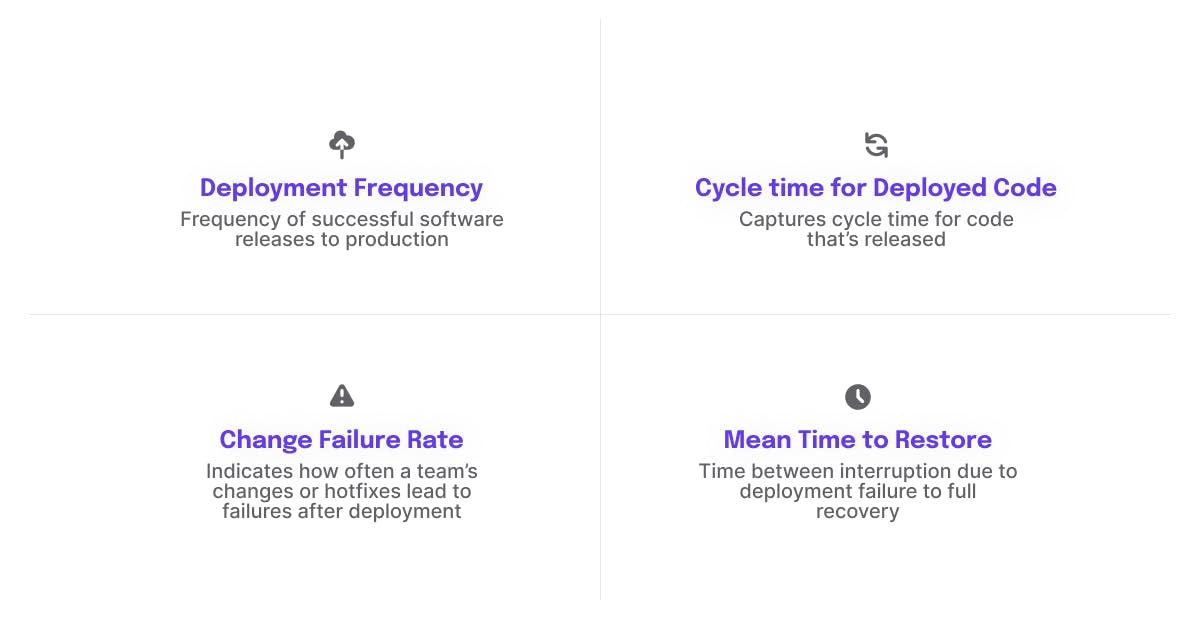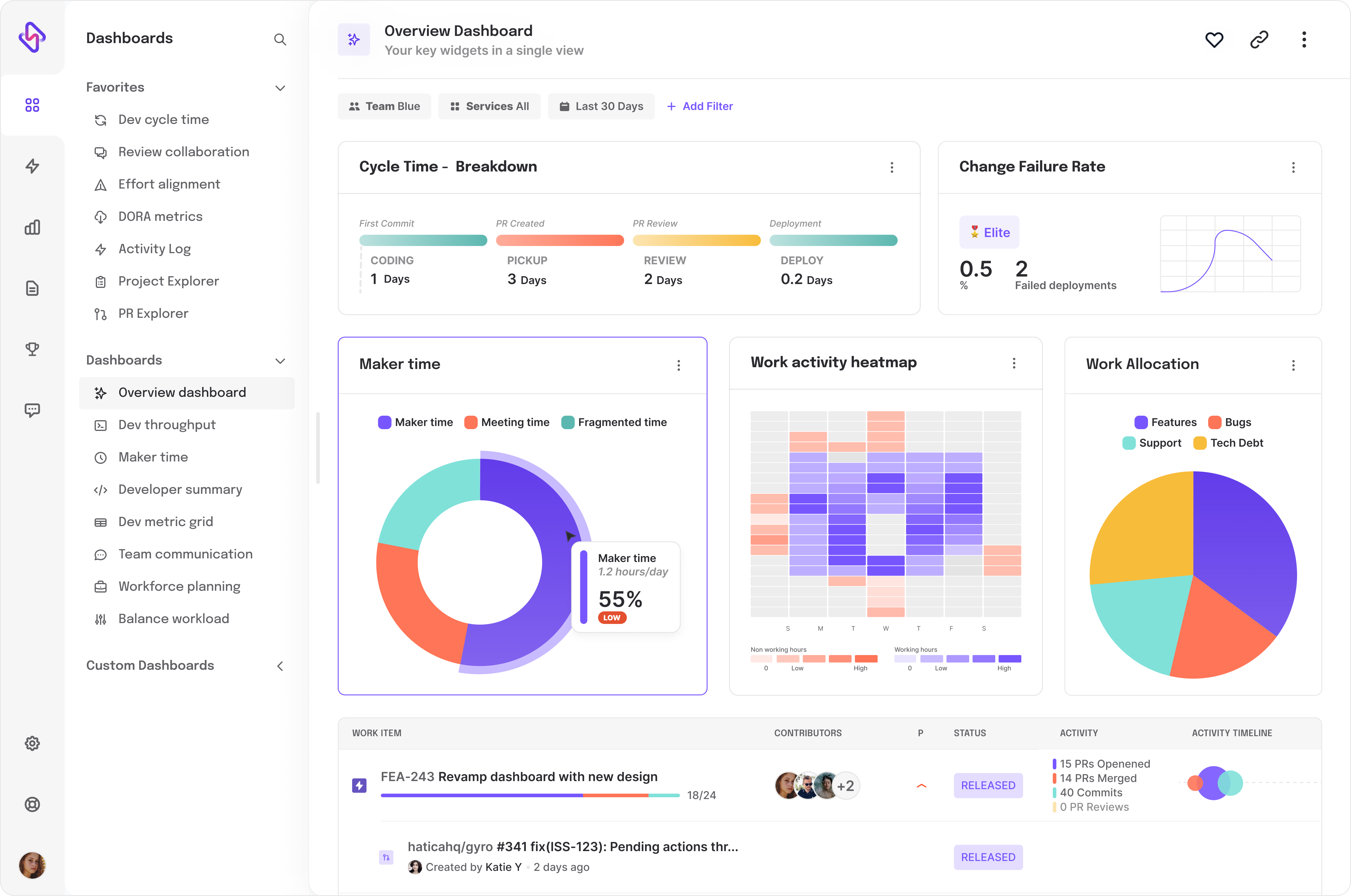- Rework Ratio: How many codes need to be rewritten? If the rework ratio is high, it indicates a high churn ratio and leads to lower efficiency.
- High-Risk Branches: What particular issue branches need the maximum rework? Often certain branches need a lot of rework leading to increased risk and low productivity.
- Investment Profile: How much time is the dev spending on each task? This could include all the productive and non productive tasks ranging from solving blockers to attending meetings.
- Work-In-Progress Balance: This metric focuses on equal work distribution amongst the team. The manager needs to ensure that the members are not overwhelmed or underloaded.
As a result, this leads to improved code quality, aligns team effort, increases dev engagement, and enhances DevOps performance.
7. Collaborative Learning
Collaborative training using the buddy system is an effective way to train developers. This leads to better team relationships and communication. In this system, two members train and work in a pair. The process is faster and more efficient as it enhances productivity and increases job satisfaction. You can track the progress using data and manage it accordingly.
8. Breaking Down the Tasks
Conduct sprint reviews and dev workflow health checks to break tasks into smaller milestones. This helps the manager with better engineering team management. It leads to faster code reviews, better cycle time, and improved PR metrics. This helps enhance SDLC by making the process of testing, deployment, and maintenance easier. However, analyze these metrics regularly to stay updated and modify work allocation whenever required.
9. Data-Driven Success
Setting the right SDLC requires looking into engineering team metrics and data to get actionable insights. It helps in finding loopholes and enhancing the cycle with the right metrics. Do the sprint reviews, look for bottlenecks, identify DevOps blockers, and plan workflow accordingly. Plan sprints by referring back to sprint retrospective and backlogs review.
From here on, it is clear that the data of engineering teams is vital to planning and executing an effective SDLC. You need to extract the data such as DORA metrics, team blockers, velocity metrics, and code review visibility. It can be challenging to manually get this as it would interfere with the team workflow and productivity. So, What is a better solution?
Data-Driven Approach to SDLC
SDLC starts with looking at the product requirements and ends with maintenance, after which the loop continues. At all stages, getting the right data can enhance the team's performance and ensure quality product delivery. In addition to this, managing the teams efficiently is a deal breaker. Solution? An engineering analytics platform like Hatica!
Hatica is an engineering management platform that pulls all the work data to give actionable insights. It integrates with your project management tool, communication tool, and software development tool to collect and interpret data, and offers custom dashboards with insights. It tracks bottlenecks in dev processes and provides velocity metrics by giving access to DORA metrics. From basic check-in to burnout tracking, you can align team efforts toward business goals.
Request a demo and explore Hatica further.
FAQs
1. What are some common SDLC methodologies?
There are various SDLC methodologies, such as Waterfall, Agile, Scrum, and DevOps. Each methodology offers a different approach to project management, development, and collaboration. The choice of methodology depends on project requirements and team preferences.
2. Why are software development best practices important?
Software development best practices ensure consistency, maintainability, and quality in the development process. They help in producing reliable software that meets user needs, reduces errors, and enhances the efficiency of development teams.
3. Are software development best practices applicable to all types of projects?
Yes, software development best practices are adaptable to various project sizes and types. They can be customized to suit the needs of different projects, whether they are small or large, simple or complex.







